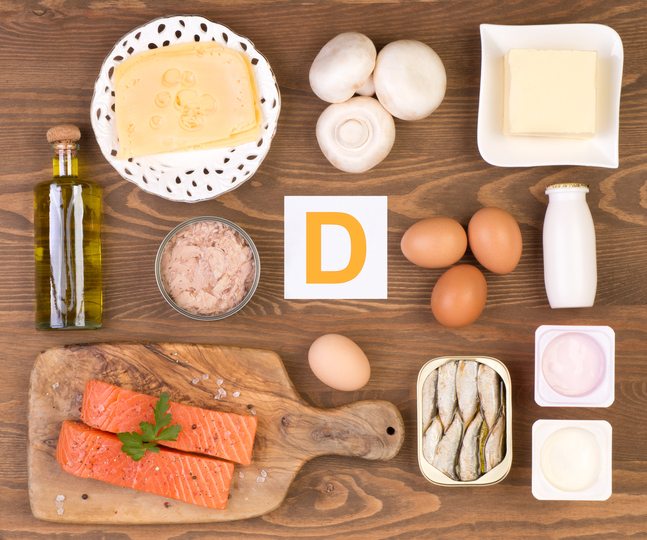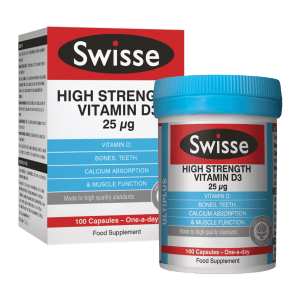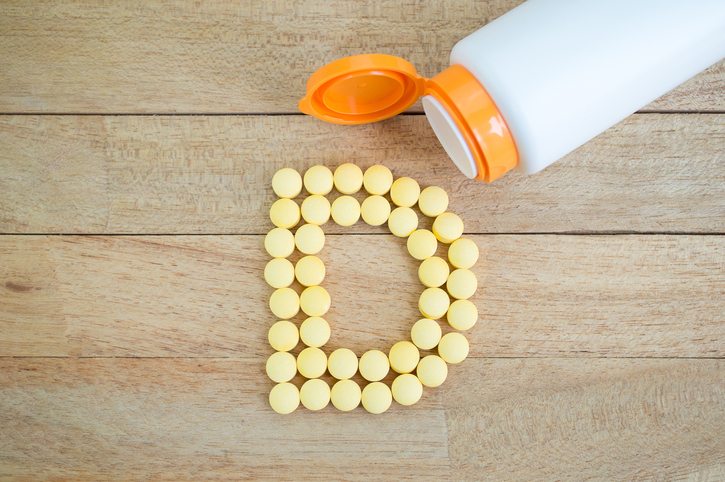Vitamin D has been shown to reduce the risk of colds and flu in a new major study. Nutritionist Rick Hay explains how to get more of the sunshine vitamin during the winter
Vitamin D is linked to tiredness and low mood during the winter, with a lack of sunshine commonly making us deficient.
And now vitamin D deficeincy has been linked to Covid-19.
Indeed, a new study published on Tuesday in the Journal of Clinical Endocrinology and Metabolism, found that the majority of patients being treated for COVID-19 at the Marqués de Valdecilla University Hospital, Spain were deficient in vitamin D.
Researchers at the University of Cantabria found that 82 percent of the 216 Covid-19 patients had inadequate levels of vitamin D, compared to around 47 percent of people in a control group who didn’t have the virus.
Authors of a major global study published in the British Medical Journal suggest that adding more vitamin D to your diet could significantly cut NHS costs, by reducing the risk of colds, flu and other dangerous respiratory infections such as pneumonia and bronchitis.
About 70 per cent of the UK population get a respiratory infection each year, making these most common reason we go to a GP, and staggeringly, the caused 2.65 million deaths in 2013.
Respiratory infections such as pneumonia were responsible for 2.65 million deaths in 2013
The study, undertaken by Queen Mary University of London, reanalysed data from 25 clinical trials involving around 11,000 people from 14 countries. The authors suggest their work settles the question of whether an increase in colds and flu in the winter is partly due to a vitamin D deficiency in the winter.
The consumption of vitamin D supplements daily or weekly showed a benefit in everybody involved in the research, but particularly for those who have low levels, do not get outside much, cover themselves against the sun or for religious reasons, or have dark skins which absorb less sunlight.
MORE: Got flu, stress or skin conditions? Top GP reveals what to eat for 12 common ailments
Vitamin D is commonly known as the sunshine vitamin, because the sun’s rays on our skin is our main way of producing vitamin D. From March to September, the sun promotes vitamin D synthesis from cholesterol in the skin, so no sunshine equals no vitamin D production.
Why do we need vitamin D?

Vitamin D is in the news right now as it is one of the most important vitamins to consider over the winter. In December last year, a deficiency in vitamin D was also linked to autism. Researchers in Australia have found a link when a study on 4,000 pregnant woman and children found that pregnant women with low vitamin D levels when 20 weeks’ pregnant were more likely to have a child with autistic traits by the age of six.
Vitamin D plays an important role from the earliest stages of life
This follows a study published in the Journal of Allergy and Clinical Immunology last year, in which researchers found a clear link between a lack of vitamin D in early childhood and allergic disorders such as asthma and eczema. This was also undertaken in Australia- which has the highest levels of allergies in infants.
This shows the important role the vitamin plays from the earliest stages of life, and the study has called for more widespread use of supplements.
According to the NHS, we need vitamin D to help the body absorb calcium and phosphate from our diet. These minerals are important for healthy bones, teeth and muscles, and therefore I recommend it to help reduce the risk of osteoporosis sin later life.
MORE: How to get more protein in your diet
Who needs to get more vitamin D?
It is difficult to assess how much direct sunlight is needed to make enough vitamin D, as it differs for each person.
However, the NHS have advised those with dark skin – such as those of African, African-Caribbean, or South Asian origin – to spend longer in the sun than those with lighter skin, and those who get little exposure to sunlight to supplement all year round.
But of course, high exposure of sun can lead to other issues such as skin cancer, so The American Academy of Dermatology recommends getting vitamin D from foods and supplements instead.
How to get more vitamin D is often a question asked by vegans. Without the encouragement form sunshine, vitamin D3 can be derived from supplements containing animal sources, such as sheep wool or lichen (algae).
Whereas D2 is derived from plant sources or yeast, such as mushrooms. It is advised by NHS to get sources of vitamin D from supplements, fortified fat spreads, breakfast cereals, and unsweetened soya drinks. Read the labels and make sure they are fortified, and not from an animal source.
20 per cent of the population are vitamin D deficient
Are you deficient?
I have been looking into the increase in the prevalence of vitamin deficiencies, and like me you might be surprised to hear that around around 20 percent of the population are, in fact, vitamin D deficient.
This can lead to weaker bones (in extreme cases even rickets or osteomalacia – both weakening the bones and leading to deformities), decreased immune function, lower mood and fatigue – typical signs of a deficiency.
Public Health England recently advised that during the autumn and winter, all children and adults should be taking supplements with ten micrograms (mcg) of vitamin D daily to help with healthy bones and muscles, including bone mineral density, fractures, and muscle strength.
They suggest it is difficult to get this from dietary sources after reviewing all evidence. This was after The Department of Health asked for an update on vitamin D dietary reference values for the UK population.
No wonder the government issued a daily dose of cod liver oil in the 50s
It is important to note that even without symptoms, too little vitamin D can still pose a health risk and lead to some deficiency symptoms. Low blood levels of the vitamin have been associated with increased risk of death from cadiovascular disease, congitive impairment in older adults, severe asthma in children, and even cancer.
No wonder in the 50s the government issued a daily dose of cod liver oil for children to supplement their diets with vitamin D; according to the National Institutes of Health, it gives you 1,360 IU per tablespoon, which is the highest amount in a food source.
How to get more vitamin D

In the spring or summer if you follow a healthy balanced diet that is varied and not overly processed and, if you then combine this with short bursts of sunshine you may not need to take a vitamin D supplement.
But in order to get sufficient vitamin D from dietary sources in the colder cloudier months, you need to be eating lots of oily fish such as sardines, salmon and mackerel. Vitamin D is also found in dairy products, but you’d probably need to eat seven or eight small yoghurt pots together with two to three tubs of berries, or a 10-11 egg omelette to even get close to the recommended amount!
Many cereals, juices and milk alternatives are fortified with Vitamin D; but again you’d need around 10 bowls of the cereal with two to three glasses of the juice.

Supplements offer a fast effective way to make sure that you are getting your daily vitamin D dose – especially if you aren’t consciously trying to include vitamin D rich foods in your diet.
Swisse has a high strength Vitamin D formula, with 25mcg per capsule, and advise one capsule daily throughout the winter. They are like an insurance policy – one a day with breakfast.
Buy Swisse ultiplus high strength vitamin D3 supplement, £14.99
You could also make sure that you eat more oily fish during this period (if you are not vegetarian or vegan) and eat more eggs, tofu, mushrooms – that have been exposed to light, and caviar if you are feeling extravagant!

MORE: 3 smoothies for weight loss
Like this article? Sign up to our newsletter to get more articles like this delivered straight to your inbox.






















































